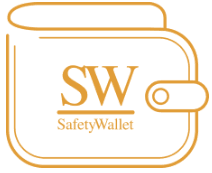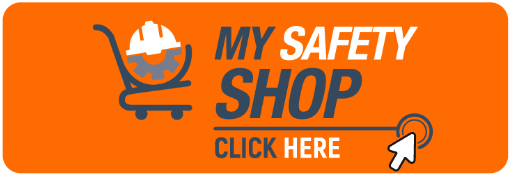Working from Home - Occupational Health and Safety
Working Remotely, Working Safely: A Guide to Health and Safety in the Home Office
Your Total Solution for Health and Safety Compliance- Employees Working From Home
Working Remotely, Working Safely: A Guide to Health and Safety in the Home Office
The rise of remote work has transformed the way many businesses operate. While offering flexibility and convenience for employees, working from home also introduces new health and safety considerations. This article explores the importance of maintaining a safe work environment for employees even when they are physically separated from the traditional office setting.
South African Legislation and Employer Responsibilities
The Occupational Health and Safety Act (OHS Act) of 1993 remains the cornerstone of worker safety in South Africa, and applies even for remote workers. The Act mandates employers to take reasonable steps to ensure the health, safety and well-being of their employees, irrespective of location. This includes:
Risk Assessments: Employers are responsible for conducting risk assessments to identify potential health and safety hazards specific to a home working environment. These could include ergonomic risks, electrical hazards, and psychosocial risks such as stress and isolation.
Provision of Equipment and Resources: Employers may be required to provide necessary equipment and resources to facilitate a safe and healthy workspace for remote employees. This could involve ergonomic furniture, proper lighting, and access to relevant safety information.
Communication and Training: Clear communication and training are crucial. Employers should inform employees about their rights and responsibilities regarding workplace health and safety at home, provide training on safe work practices, and establish clear protocols for reporting any hazards or incidents.
Penalties for Non-Compliance
Failure to comply with the OHS Act can lead to a range of penalties, including fines and imprisonment. However, the human cost of neglecting worker safety is far greater. Musculoskeletal disorders, stress, and eye strain are just some potential repercussions for employees working in an unsafe home office environment.
Complete the form below to find out how to qualify for your Free Health and Safety Audit today.
Benefits of Prioritising Health and Safety in Remote Work
Creating a safe and healthy remote work environment offers numerous benefits for both employers and employees:
Improved employee well-being: A focus on ergonomics, mental health, and safety protocols can lead to healthier and happier employees.
Reduced absenteeism and worker turnover: A healthy workforce leads to fewer sick days and a more stable team.
Enhanced employee morale and productivity: When employees feel safe and supported, they are more engaged and productive.
Improved risk management: Identifying and mitigating potential hazards can prevent costly workplace injuries and illnesses.
Best Practices for Ensuring a Safe Home Office
Here are some key best practices for promoting a safe and healthy home office environment for remote employees:
Comprehensive Risk Assessment: Conduct thorough risk assessments specific to home offices, considering factors like workspace layout, equipment used, and potential distractions.
Ergonomic Workspace Design: Provide guidance or even financial assistance for employees to set up ergonomically sound workstations.
Flexible Working Hours: Consider implementing flexible working hours to combat fatigue and encourage breaks.
Clear Communication and Training: Communicate safety expectations clearly, provide training on safe work practices (e.g., electrical safety, data security), and establish a process for reporting hazards.
Mental Health and Well-being Support: Recognise the potential for stress and isolation in a remote work environment. Offer resources like online training, Employee Assistance Programs (EAPs), or access to mental health professionals.
Regular Communication and Collaboration: Maintain regular communication with remote employees to avoid feelings of isolation and promote team cohesion.
If you have any questions, please feel free to speak to one of our Experts
Top 10 Fails to Avoid in Home Office Health and Safety
Here are some common pitfalls to avoid when setting up remote work arrangements:
Neglecting risk assessments: Failing to identify and address potential hazards in the home office environment.
Inadequate ergonomic considerations: Not providing guidance or resources to employees for setting up a safe and comfortable workspace.
Rigid working hours: Not allowing for flexibility in working hours, potentially contributing to fatigue and musculoskeletal issues.
Poor communication and training: Failing to clearly communicate safety expectations or provide proper training on safe work practices for home offices.
Ignoring mental health concerns: Not acknowledging the potential for stress and isolation in remote work settings and neglecting to offer support resources.
Limited equipment and resources: Not providing necessary equipment (e.g., ergonomic chairs) or resources (e.g., software licenses) for employees to work safely and efficiently.
Insufficient cybersecurity measures: Not providing guidance or resources to mitigate cybersecurity risks associated with remote work.
Lack of clear boundaries: Not establishing clear boundaries between work and personal life for remote employees.
Limited breaks and physical activity: Discouraging breaks or failing to promote the importance of regular physical activity during working hours.
Neglecting incident reporting: Not establishing clear procedures for reporting potential hazards or incidents that occur in the home office environment.
How MAKROSAFE Can Help You Ensure a Safe and Compliant Home Office
MAKROSAFE, an authorised dealership of SafetyWallet, understands the unique challenges of managing a remote workforce. Partnering with OHS Online and the Triple P HSMS, MAKROSAFE offers a comprehensive suite of services to assist employers in creating a safe and compliant remote work environment for any industry:
Risk Assessments: MAKROSAFE can conduct thorough risk assessments tailored to home office environments, identifying potential hazards related to ergonomics, electrical safety, data security, and mental well-being.
Health and Safety Courses: They offer a variety of OHS-accredited online courses that educate employees on safe work practices in a home office setting, covering topics like ergonomics, electrical safety, and cybersecurity.
Safety Policy Development: MAKROSAFE can assist in developing and implementing clear and comprehensive health and safety policies specifically for remote employees, outlining expectations and protocols.
SafetyWallet: SafetyWallet is a user-friendly online platform that allows employers to manage all their safety documents and procedures electronically, including home office safety policies and risk assessments.
OHS Online: Through their partnership with OHS Online, MAKROSAFE provides access to a vast library of online safety resources, including guides and templates for setting up a safe home office, managing mental health in a remote work environment, and best practices for cybersecurity.
Triple P HSMS: The Triple P HSMS (Policies, Procedures, and Practices) is a comprehensive health and safety management system that can be customised to help you develop, implement, and maintain a robust health and safety program for your remote workforce.
Working from home offers numerous benefits for businesses of all sizes. However, prioritising health and safety in this new working environment remains crucial. By adopting the best practices outlined above and partnering with MAKROSAFE, you can create a safe and compliant work environment for your remote employees, fostering a healthy and productive team. Remember, a happy and healthy workforce is an essential ingredient for long-term business success in today's remote work landscape.
Taking the Next Step
Contact MAKROSAFE today for a free consultation to discuss your specific needs and how they can help you create a safe and healthy remote work environment for your employees. Investing in their well-being is an investment in the future of your business.
Any questions? Speak to one of our Experts
As a subscriber of SafetyWallet, you're entitled to a 25% discount on our health and safety courses. The value of safety cannot be overstated, and we're committed to supporting institutions in fostering a secure environment. Take advantage of your SafetyWallet subscription and enhance safety standards within your institution. Our courses are also available for purchase on My Safety Shop, ensuring easy access to the training you need.
MAKROSAFE, as a proud SafetyWallet Authorised Dealership of SafetyWallet, offers a free consultation to assess your current training needs and develop a customised training plan. Contact us today and let's build a brighter, safer future for the South African Food, Drinks, and Tobacco Industry, together. Click on the image below to find a SafetyWallet Solution that suits your business (Branch/Site specific) and get the 21 benefits that includes FREE Health and Safety E-Learning for all staff along with the subscription:
To find out what other Additional Services we offer, please click on the picture below:
SAFETYWALLET In Co-operation with MAKROSAFE and MY SAFETY SHOP



